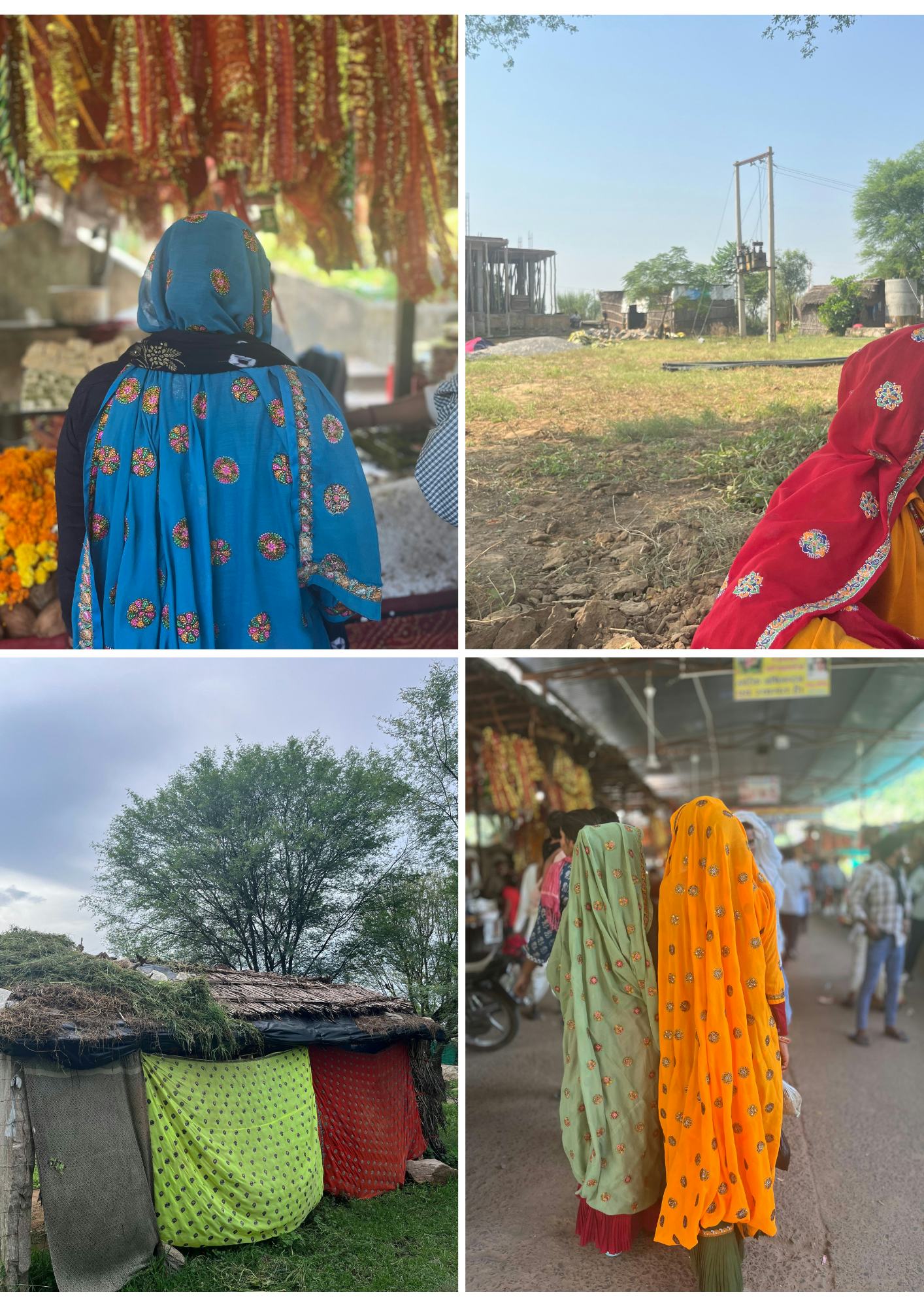Meena Lugdi
The Meena Lugdi, a vibrant traditional dress, is a hallmark of the Meena community in Rajasthan, especially in the tribal regions of Udaipur, Dungarpur, and Banswara
The Meena Lugdi, a vibrant traditional dress, is a hallmark of the Meena community in Rajasthan, especially in the tribal regions of Udaipur, Dungarpur, and Banswara
Recognizable by its bright, appealing colors and golden embroidery, this attire is both visually striking and culturally meaningful. Each Meena Lugdi is characterized by intricate embroidery, elaborate mirror work, and a vivid color palette—commonly red, green, blue, and yellow—which reflects the rich traditions of Rajasthani craftsmanship.
Typically, the Meena Lugdi consists of two main elements: the Lugdi or Angrakha, a flowing skirt or dress decorated with fine embroidery and mirrors, and the Odhni or Chunri, a long scarf often draped over the head. These scarves are also beautifully adorned with traditional embroidery and mirror work, making the ensemble even more distinctive and appealing.
For Chaina, who performs at celebrations where his role requires him to dress as a woman, wearing these traditional outfits is essential. Often, he borrows his wife Kamlesh's clothes, who jokingly mentions that her husband’s dresses are even more beautiful than her own.
In earlier times, women hand-embroidered their own intricate designs on the Odhni. They would buy plain cloth and spend weeks, sometimes months, designing and stitching each detailed pattern. Chaina fondly recalls his mother creating floral patterns, known as kaseeda, on fabric during winter when farm work slowed. In places like Sawai Madhopur, where the soil required less maintenance, women had more time to invest in crafting elaborate designs.
However, today this art has largely been taken over by machines, and the market offers an abundance of ready-made designs, spoiling women for choice. Kamlesh used to have a few hand-embroidered Lugdis, but over time they were cut into smaller pieces to be used as filling for gudadi—thick bedding for the cold winter nights.
Now, as November arrives, Chaina and others in his village will begin stitching these gudadi to prepare for the colder nights, a simple tradition that also stitches the community together in colours, patterns and weaves.












